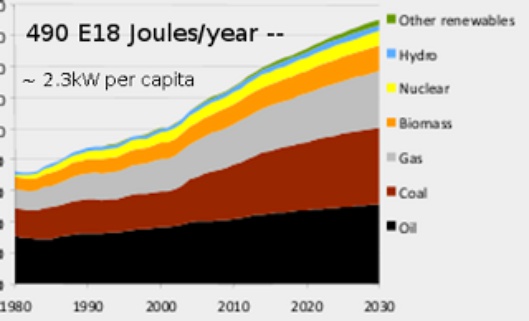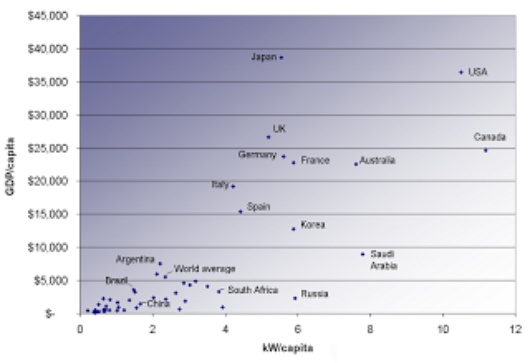Climate disruption: Politics and science
Published on
In a pleasant surprise, the UN Climate Change Conference in Poznań, Poland ended with a about what needs to be done. The agreements should lead to commitments in Copenhagen at end of this year cutting emissions 20% by 2020. As we enter what may be a groundbreaking new year, let's look at some of the research and information behind these decisions, as well as a few of the continuing controversies.
At the conference, the presented the energy outlook and possible scenarios for cutting emissions of GHG (GreenHouse Gases).
“growing consensus" International Energy Agency (IEA)
This graph shows the projected reference scenario, with the world population increasing to 8 billion from today's 6.7 billion, a projected energy consumption growth of 1.6% per year, and two thirds of this energy still coming from fossil fuels. This BAU (business as usual) scenario is considered unsustainable. NOTE: click on images to enlarge them. Also means "click for source" and "click for additional explanation". This graph shows the "rich" or developed countries at the top, the poor and developing countries at the bottom. The horizontal axis shows per capita energy consumption in kilowatts (kW). Canada and the U.S. lead with a consumption per capita of 11 kW. has a diagram showing how that 11kW are used. Europe has half of that, and developing countries roughly 1 kW but catching up fast. In the future, developed countries should decrease their energy use by applying conservation measures, while developing countries are expected to increase theirs. With these changes on both ends of the spectrum, the new world average would be 2kW, a goal slightly less than today's use of 2.3 kW. Such a future, charted by the Swiss ETH institute is calledLet's illustrate this more concretely with few examples what watts and kilowatts mean: If you continuously run 10 light bulbs of 100W each, you are using energy at a rate of 1kW, which means 1kwh (kilowatthour) every hour. That also happens to be the average consumption of a U.S. household. The U.S. average energy use per capita is 11 kW . Roughly 10kW of this figure is for nonresidential use, such as transportation and industry, prorated per capita.
Currently, 1kWh costs about $.10 or 8 € cents. That price will go up, even in a BAU scenario, as cheap energy sources get scarcer. With measures to limit emissions, such as the ETS cap & trade tax on emissions mentioned in our last post, the cost of energy will increase even faster. Do we really want to do this?





